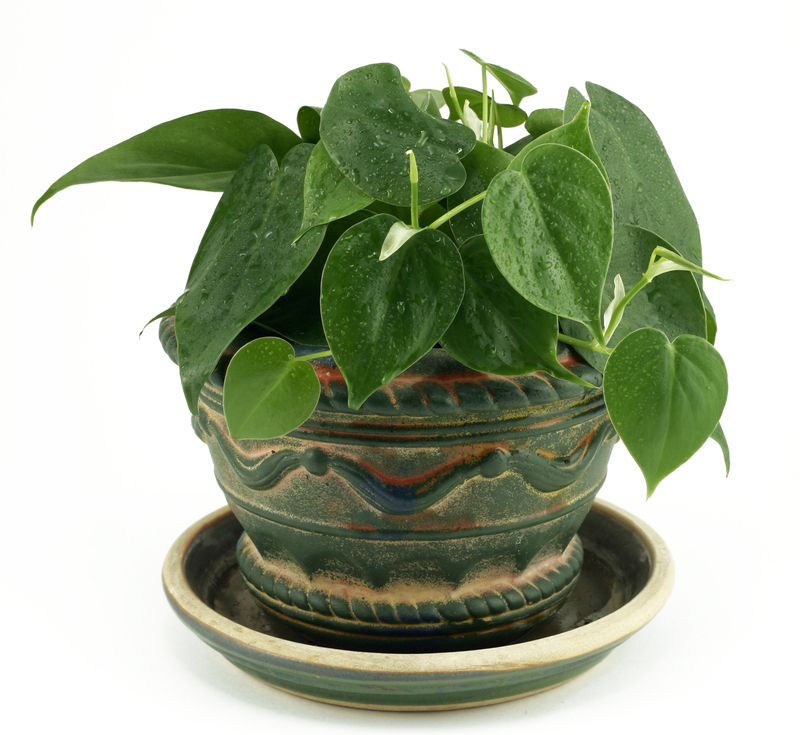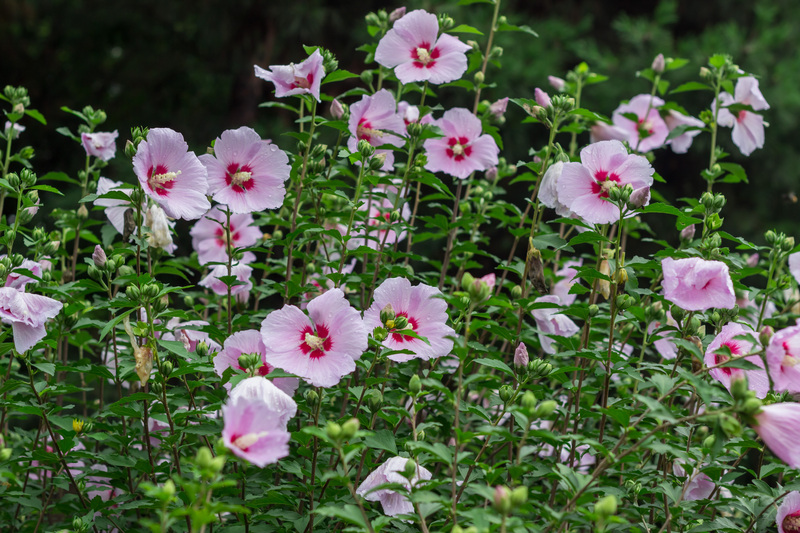How to Shield Your Garden from Winter's Relentless Cold
Posted on 20/08/2025
How to Shield Your Garden from Winter's Relentless Cold
As winter approaches, your garden becomes vulnerable to the harsh, relentless cold. Frost, snow, biting winds, and unpredictable weather can threaten even the hardiest plants. Knowing how to protect your garden from winter's chill is essential for gardeners who want to ensure their plants thrive year-round. In this comprehensive guide, you'll learn how to shield your garden from winter's relentless cold using proven strategies. Whether you're a seasoned gardener or a beginner, these expert tips will help you care for your garden through the coldest months.
- Why You Need to Shield Your Garden from Winter
- Assessing Your Garden's Winter Risk
- Preparing Your Garden for Winter's Cold
- Using Physical Barriers to Shield Plants
- Mulching and Insulation Techniques
- Winter Watering Practices
- Protecting Container Plants from the Cold
- Choosing Cold-Hardy Crops and Plants
- Common Winter Garden Pests And Problems
- Frequently Asked Questions
- Conclusion: Give Your Garden Winter Shielding
Why You Need to Shield Your Garden from Winter
Winter's fierce cold can inflict serious damage on unprepared gardens. Low temperatures, high winds, fluctuating freezes and thaws, and heavy snow can:
- Kill tender plants through frost damage or root freeze
- Desiccate evergreens and shrubs with drying winds
- Rot roots with waterlogged, frozen soil
- Disrupt the life cycles of bulbs and perennials
- Encourage disease and pest infestations
The result? Your hard work can be undone overnight. The good news is that learning how to shield your garden from winter's relentless cold ensures your plants bounce back strong in spring.
Assessing Your Garden's Winter Risk
Before you start protecting your garden from winter chill, evaluate your garden's exposure and risk level. Consider these factors:
- Microclimates: Areas sheltered by walls, fences, or trees may stay warmer. Open spaces are more exposed.
- Soil Type: Sandy soil drains quickly and may freeze faster; clay soils hold water and promote root rot.
- Plant Hardiness: Identify which plants are most vulnerable (annuals, tropicals, young perennials).
- Winter Weather Patterns: Know your USDA Plant Hardiness Zone and typical winter conditions.
A full inventory gives you a clear idea of where and how much cold protection your garden needs.
Preparing Your Garden for Winter's Cold
Effective protection against winter's persistent cold begins before the first frost:
- Clean Up Debris: Remove dead leaves, stems, and weeds to minimize disease.
- Amend Soil: Add compost or well-rotted manure to promote healthy root systems.
- Cut Back Perennials: Trim perennial plants according to type--some prefer longer stems for insulation.
- Stake or Tie Up Tall Plants: Reduce breakage from snow and wind.
Tip: Get your garden insulated and fortified before the first hard freeze hits.
Using Physical Barriers to Shield Plants from Winter Cold
One of the most effective winter shield methods is erecting physical barriers to block wind, frost, and snow.
Types of Physical Barriers
- Row Covers: Lightweight, breathable fabric draped over plants, secured with pegs, shields from light frost but allows sunlight and moisture.
- Burlap Screens: Set up windbreaks around vulnerable shrubs or garden beds using sturdy stakes and burlap.
- Cold Frames: Wooden boxes with glass or plastic tops trap solar warmth for seedlings and winter vegetables.
- Cloche Domes: Individual clear covers placed over young or special plants for targeted frost protection.
- Plastic Tunnels: Hoop houses or mini-greenhouses create warmer microclimates for vegetables and herbs.
Make sure all barriers are snugly anchored to prevent wind from dislodging them. Remove covers during sunny, mild periods to avoid overheating and promote air circulation.
Mulching and Insulation: Blanket Your Garden from the Cold
Insulation is your secret weapon against winter's relentless chill. Mulch is the best insulator for plant roots, bulbs, and soil:
- Apply Mulch Generously: Use leaves, straw, wood chips, shredded bark, pine needles, or even evergreen boughs.
- Ideal Depth: Spread 2-6 inches thick, avoiding direct contact with stems (to prevent rot).
- Renew During Winter: Top up after snow melt or heavy rain to keep roots insulated all season.
Mulch keeps soil temperatures steady, prevents root heaving, and helps retain moisture during dry spells. For borders and beds, you can add a layer of compost beneath the mulch for added nutrition come spring.
Winter Watering Practices: Don't Let Gardens Dry Out
Surprisingly, winter drought is a threat for many gardens. Cold winds and frozen ground pull moisture away from roots and evergreens.
- Water Thoroughly Before Ground Freezes: Give trees, shrubs, and perennials a deep drink in late fall.
- Monitor Soil Moisture: When snow is absent and ground is unfrozen, check for dryness and water on warmer days.
- Avoid Waterlogging: Good drainage is crucial; standing water can freeze and suffocate plant roots.
Remember, well-hydrated plants withstand cold stress far better!
Shielding Container Plants from Winter's Relentless Freeze
Plants in pots are highly vulnerable to cold since roots are exposed on all sides. Shield your container garden from winter's chill with these tips:
- Move Indoors: Bring tender or tropical potted plants into a garage, shed, or porch.
- Cluster Pots Together: Group containers against a warm house wall for more warmth.
- Insulate Pots: Wrap pots in bubble wrap, burlap, or horticultural fleece and set them on boards, not bare ground.
- Raise Off Ground: Use pot feet or bricks to prevent freeze damage at the bottom of pots.
Container plants may also need less water in winter, but never let them dry out completely.
Choosing Cold-Hardy Crops and Plants
The best way to defeat winter's unyielding cold is to plant wisely in the first place:
- Choose Native Plants: Native species are often best adapted to your local winter conditions.
- Grow Cold-Hardy Vegetables: Kale, spinach, cabbage, Brussels sprouts, radish, and leeks often thrive in winter with minimal cover.
- Select Tough Perennials: Sedum, heuchera, Russian sage, and coneflower are resilient choices.
- Opt for Spring-Flowering Bulbs: Daffodils, snowdrops, crocus, and tulips all survive deep frost.
Check plant tags or online resources for recommended hardiness zones before purchasing new additions for your winter garden.
Common Winter Garden Pests and Problems
Frost and snow aren't your only winter challenges. Your garden still needs shielding from pests and diseases that exploit weakened plants:
- Rodents (voles, mice, rabbits):
- Chew bark and gnaw on stems, especially under snow cover. Protect trunks with wire mesh or hardware cloth.
- Slugs and Snails:
- These pests overwinter in mulch; hand-remove and use organic slug deterrents even in the off-season.
- Diseases (Mildew, Rot, Blight):
- Often develop on wet, poorly ventilated plants. Space plants well and avoid crowding under covers.
Regular inspection and prompt action will help you maintain a healthy, cold-resistant garden through the winter.
Frequently Asked Questions about Shielding Gardens from Winter Cold
- Q: When should I start protecting my garden from winter?
- A: Start preparations in late fall, before the first expected hard frost. Perform garden clean-up, apply mulch, and get covers and barriers in place ahead of winter's arrival.
- Q: Can I use plastic to cover plants during the winter?
- A: Plastics can trap heat for short periods (overnight frost), but must be removed during the day. Plastic that touches leaves can also cause freeze damage; use breathable fabric for most long-term protection.
- Q: Will mulching late hurt my plants?
- A: Mulch should be applied after the soil is already cold, not warm, to avoid attracting pests. Mulching too early may also delay dormancy in plants.
- Q: How do I protect newly planted trees or shrubs?
- A: Plant protection can include a ring of mulch at the base, burlap wraps, and wooden stakes with wire mesh to deter wildlife and support against wind.
- Q: What is the best way to insulate garden beds?
- A: Thick layers of organic mulch plus row covers or low tunnels combine to give the best insulation for tender vegetables and perennials.
Conclusion: Give Your Garden the Best Winter Shielding
When you take action to protect your garden from winter's relentless cold, you're investing in a stronger, healthier, and more beautiful garden for the seasons ahead. From mulching and physical barriers to proper winter watering techniques and careful plant selection, every measure you take forms a crucial part of your garden's shield against winter's worst.
Don't let winter ruin your garden's potential! With a little preparation, strategic planting, and vigilance, you'll be rewarded with flourishing perennials, resilient shrubs, and thriving early crops come spring. Embrace these techniques for shielding your garden from winter's relentless cold, and ensure your green oasis stands strong against even the harshest winter weather.
Ready to start? Pick a strategy above and begin winter-proofing your garden today!



